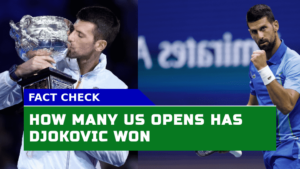
Over the past weekend, a highly publicized brawl in Montgomery captured widespread attention as a group of white men attacked a Black man, leading to a frenzy of memes and TikTok videos. While Montgomery’s law enforcement initially refrained from attributing race as a motive, some witnesses and viewers perceived racial dynamics at play. Joining us to discuss this is Gene Demby, co-host of NPR’s Code Switch podcast. Gene, welcome.
GENE DEMBY: Thank you, glad to be here, Steve.
STEVE INSKEEP: What was the draw for people to engage with this incident?
DEMBY: The viral response to the Montgomery brawl videos serves as a release of catharsis for many viewers. It taps into a genre of viral content where individuals who initiate conflict face their own consequences afterward, a kind of comeuppance narrative. However, these videos also resonate with the broader trend of conflicts involving Black and white individuals in public spaces. Remember the incident in Philadelphia where two Black men were confronted while sitting in a Starbucks, or the San Francisco case where a white woman called the police on a Black girl selling water. The specter of these events is tinged with a deeply troubling racial panic that can escalate when law enforcement is involved. In the case of the Montgomery incident, though, the stakes are comparatively lower. The initial outnumbering of the Black dockworker by white instigators leads to an unexpected turn of events. Numerous bystanders intervene on the Black man’s side, even someone seemingly arriving by boat to assist. Chairs are wielded in the melee, leading to an absurd and unconventional outcome.
INSKEEP: So, this video went viral because it’s humorous and subverts expectations?
DEMBY: Absolutely, the video’s unexpected outcome defied our usual anticipations. The memes that sprouted from the incident capture this sense of catharsis. Unlike many cases where the target of conflict is helpless, the Black man at the center of this incident received an outpouring of support, creating a chaotic yet ultimately less harmful situation.
INSKEEP: How do you interpret the police’s statement that race may not be a factor?
DEMBY: The police’s stance likely follows a burden of proof that demands explicit evidence of racial animus, essentially requiring a direct admission of racial motivation. However, this view oversimplifies reality. Few people openly state their motivations in such a straightforward manner. This is why cases involving racially motivated discrimination are challenging to establish in court. Roy S. Johnson, an opinion columnist, dissents from the police’s stance and argues that even if the attack wasn’t overtly racially motivated, the incident’s optics make race a clear factor. This viewpoint resonates particularly in a place like Montgomery, with its history deeply influenced by racial dynamics, from its role as a slave port to being a touchstone in the civil rights movement.
INSKEEP: Your insights remind me of recent news, like the 2023 Supreme Court ruling on Alabama’s discrimination against Black voters. How does this incident tie into the community’s response to someone under attack?
DEMBY: Indeed, the Montgomery incident showcases a community coming together to rescue someone who felt targeted. The social media reaction is noteworthy; this story embodies the essence of Black Twitter, a space where Black users have had a significant presence. Despite recent changes in the landscape, with some users leaving and an increase in far-right hate speech, the essence of Black Twitter remains intact. The incident quickly transformed into memes and inside jokes within this digital community. This phenomenon isn’t new; the discourse around race and police violence largely gains traction due to Black Twitter’s signal boosting. Even as Black users are dispersed across the digital sphere, the essence of Black Twitter still powers much of these discussions.
INSKEEP: Thank you, Gene Demby of the Code Switch podcast, for sharing your insights.
DEMBY: Thank you, Steve. Always a pleasure
Disclaimer : The content of this page is written by an independent third party. earninsta does not endorse the opinions expressed. earninsta is not responsible in any way for the contents of this site. earninsta cannot guarantee or endorse them. Take all necessary steps to ensure that the information provided and any content is accurate, up-to-date, and verifiable. earninsta disclaims all express and implied warranties relating to this report or its content.






